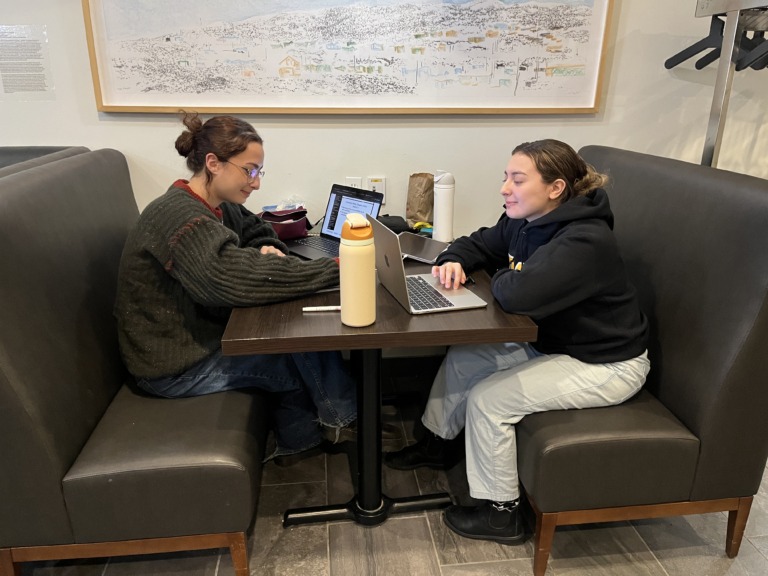
Dalhousie teaching assistants reflect on contract negotiations
Teaching assistants were prepared to strike if an agreement wasn’t reached on Oct. 21
Editor’s note: This story was reported before CUPE and Dalhousie University reached a deal on the evening of Oct. 20.
Adrian Rumson was prepared to hit the picket lines for the second time since he began his graduate program at Dalhousie University in 2022.
This time around, he is a member of the bargaining team for the Canadian Union of Public Employees 3912, representing the union’s members at Dalhousie.
“Everyone just feels like a strike is very likely; that’s not a thrilling sensation,” said Rumson.
Dalhousie’s CUPE 3912 bargaining unit reached a deal with the university after hours of conciliation talks on Oct. 20. The union was prepared to strike on Oct. 21 if an agreement wasn’t reached.
“We remain hopeful an agreement can be reached on Monday,” said Wanda Costen, Dalhousie provost and vice-president academic, in a statement released on Oct. 17. “We recognize the vital role CUPE members play in the academic life of Dalhousie.”
At Dalhousie, CUPE 3912 represents markers, demonstrators, teaching assistants and part-time instructors. If the strike went ahead, all classes taught by part-time instructors would’ve been suspended for the duration of the job action.
“We deserve to be fairly compensated for the work that we do,” said Rumson. “We do not want to strike. We take a lot of pride in our work. We love our students, we love the work that we do. It is difficult to see the administration not wanting to acknowledge that.”
Marking, labs, tutorials, demonstrations and fieldwork conducted by union members would also have been suspended for the duration of the strike.
“It is a huge part of the learning experience to do a lab or to have your essay graded with feedback by a teaching assistant … that stops with a CUPE strike,” Rumson said.
The last conciliation meeting between Dalhousie and CUPE 3912 was on Oct. 2.
The details of the agreement haven’t yet been made public. But, Rumson said a “handshake agreement” was made with the university in an Oct. 2 meeting to remove the marker and demonstrator positions by fall 2026. Those jobs and employees would be transferred into teaching assistant positions.
According to the previous collective agreement between Dalhousie and CUPE 3912, teaching assistants are meant to directly interact with students and assist instructors.
Markers are solely responsible for marking and grading students’ written work, while demonstrators are responsible for assisting students in laboratory environments.
That isn’t how the position has been utilized, said Holly Hanes, CUPE 3912 vice-president of teaching assistants.
“Dal consistently wants to abuse the marker/demonstrator position,” she said. “A lot of us held TA positions a couple of years ago, and they’ve been reclassified [as marker and demonstrator positions]. They are the exact same work.”
Markers and demonstrators make $24 per hour, while teaching assistants earn $30.05 per hour, Hanes said.
Rumson said the “two-tiered system” for teaching assistants is “unacceptable” moving forward.
Dalhousie teaching assistants’ current hourly wage is $30.05 per hour, the fifth lowest among U15 universities.
“Dalhousie can do better,” said Rumson. “It wants to position itself as a first class research and teaching institution, the first step to that is having teaching assistants … be paid better, which gives us better comfort in our research.
“This is a ground-up, easy win for Dal to make itself a better teaching and research institution, and it doesn’t seem that they want to do that, but they sure want to tell you that they are.”
Jason Haslam is an English professor at Dalhousie. He agrees that teaching assistants are underpaid.
“There’s people TA-ing in my courses who could just as easily be teaching the courses. We rely on them so much, and they are so poorly paid,” he said. “It’s just horrible.”
Haslam was the co-chair of the bargaining committee for the Dalhousie Faculty Association during the association’s 2025 contract negotiations. On Aug. 20, Dalhousie locked out almost 1,000 faculty members before the university and its faculty ratified a collective agreement, ending the lockout on Sept. 17. Most classes at Dalhousie were cancelled for the duration of the lockout, with students missing almost three weeks of school before courses started on Sept. 23.
He worried that another labour disruption would impact the remainder of the already-condensed fall term.
“I’m not so sure our administration understands the disruption they’ve already caused,” Haslam said. “I don’t think they understand what another labour dispute will create.”
In the event of a job action, Rumson said teaching assistants need to make their voices heard to Dalhousie’s administration.
“We need people on the picket line … We need visibility, we need people marching with signs.”






